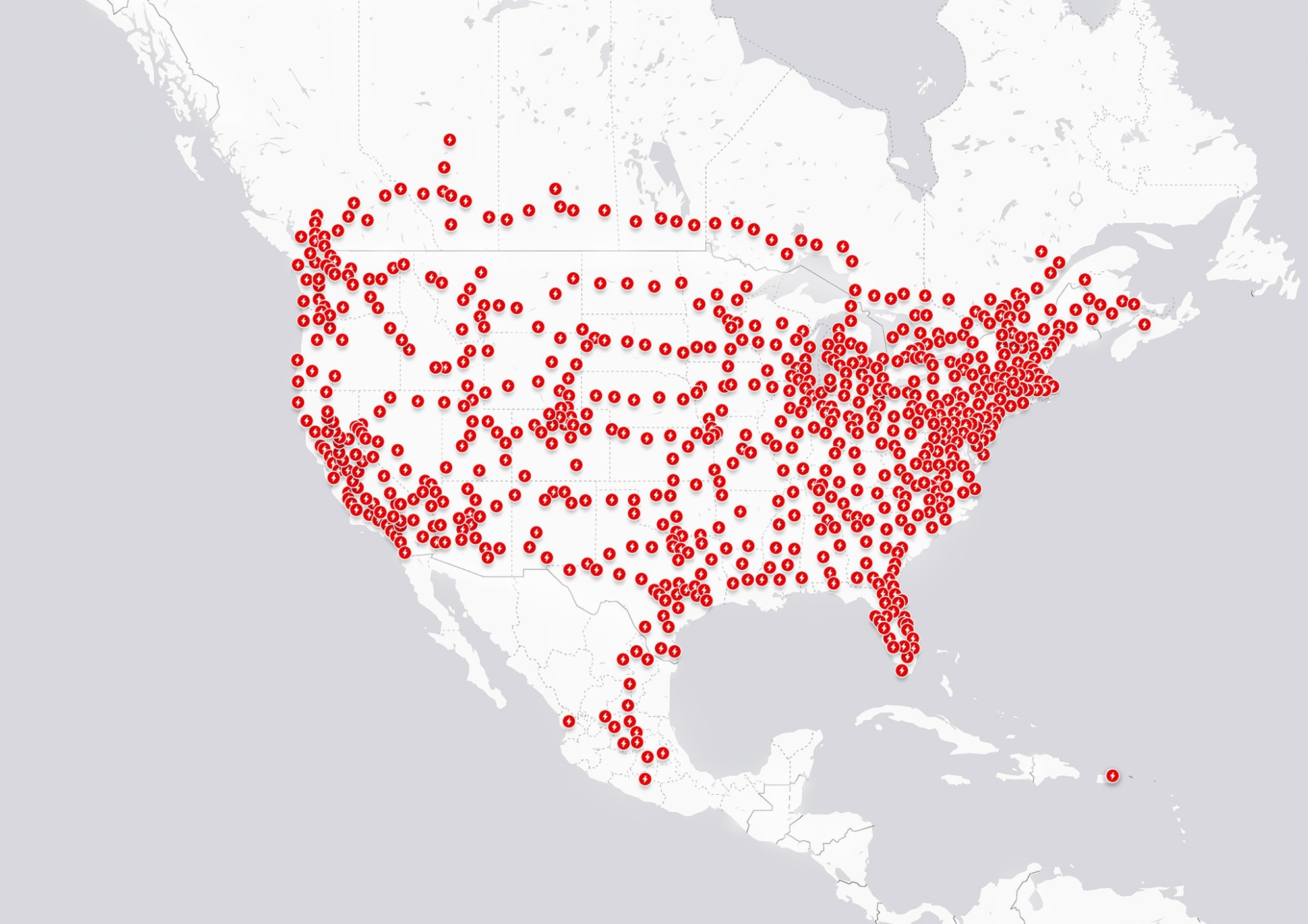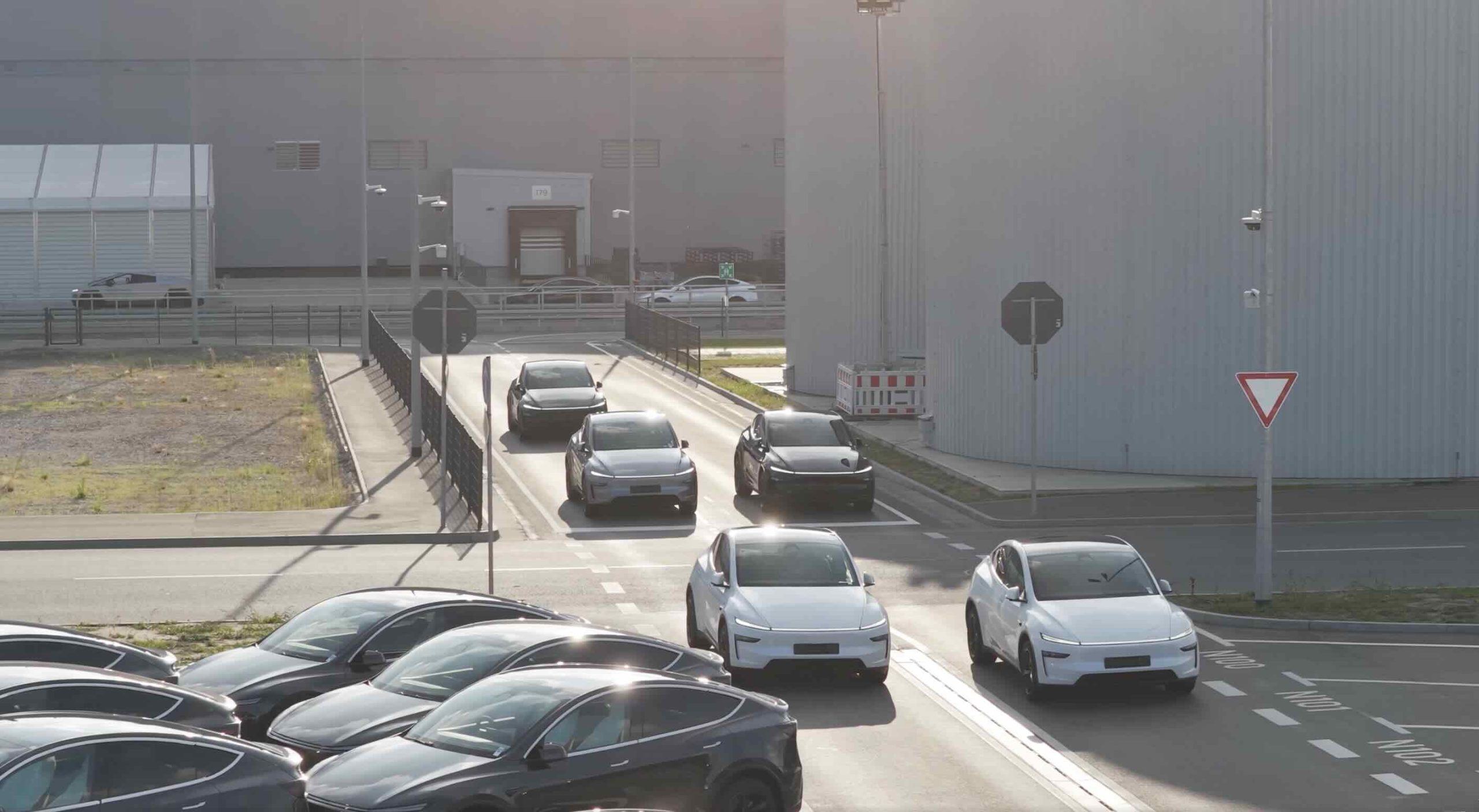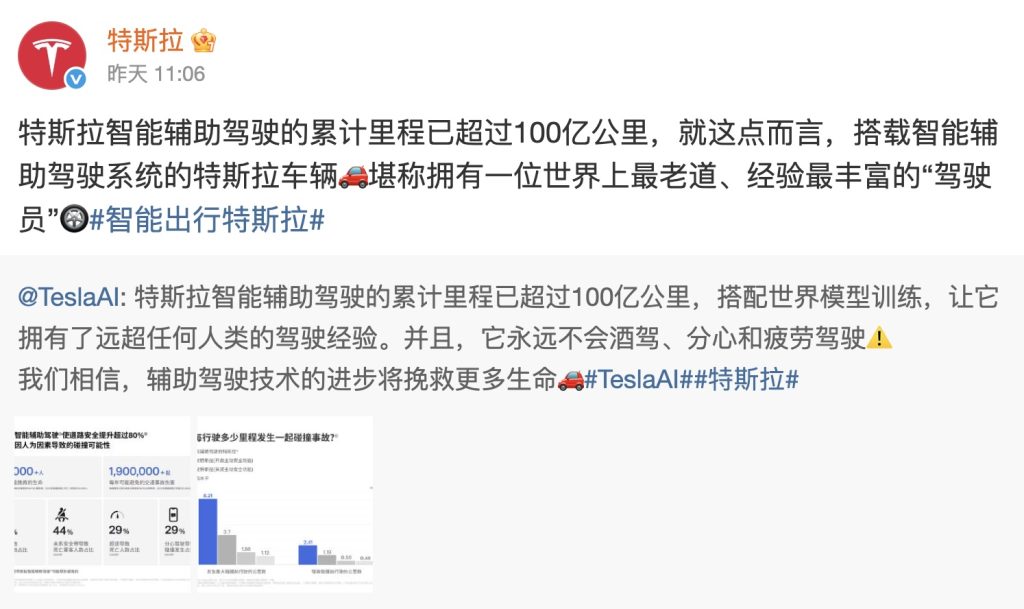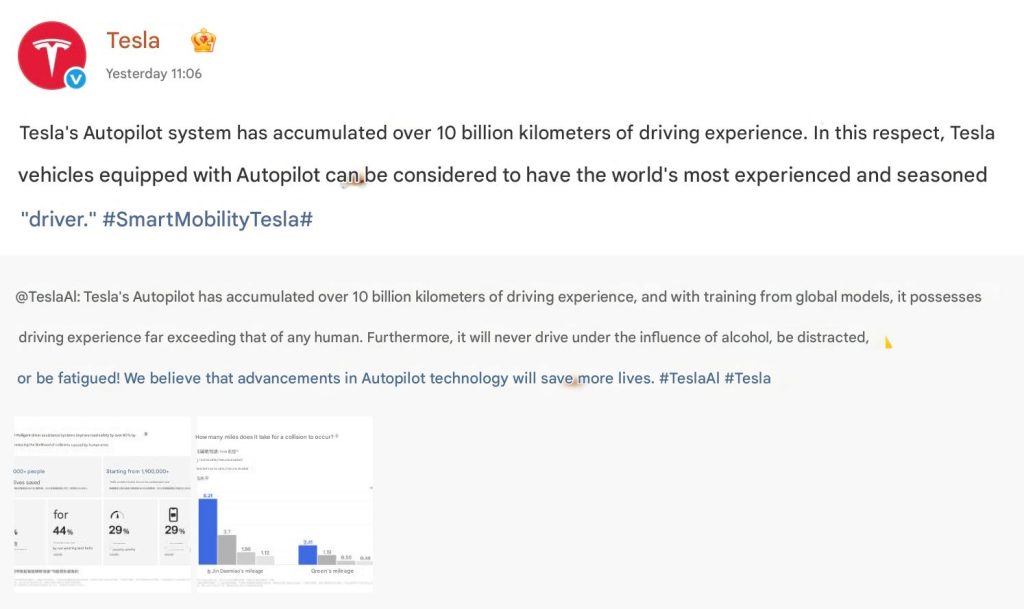Tesla announced this morning that it would open some of its United States Supercharger Network to competitors in an effort to not only make some of the $7.5 billion in funds from the Bipartisan Infrastructure Law available to the automaker, but also to make EV charging more available to consumers.
Tesla officially confirmed this morning that it would open select Superchargers in the U.S. to all EVs, an unprecedented move in the company’s history. In the past, Tesla has offered an exclusive strength to its owners by offering an expansive, robust, and dependable EV charging network. It has been arguably one of Tesla’s biggest advantages, and since CEO Elon Musk said in 2021 that the Supercharging Network would be opened to competitors that year, the automaker has reluctantly moved toward that goal.
EV charging to receive $7.5 billion in Bipartisan Infrastructure Deal: White House
Now, it has finally come to fruition.
This morning, The White House confirmed the plan with further details, stating:
“Tesla, for the first time, will open a portion of its U.S. Supercharger and Destination Charger network to non-Tesla EVs, making at least 7,500 chargers available for all EVs by the end of 2024. The open chargers will be distributed across the United States. They will include at least 3,500 new and existing 250 kW Superchargers along highway corridors to expand freedom of travel for all EVs, and Level 2 Destination Charging at locations like hotels and restaurants in urban and rural locations. All EV drivers will be able to access these stations using the Tesla app or website. Additionally, Tesla will more than double its full nationwide network of Superchargers, manufactured in Buffalo, New York.”
Last week, it was confirmed that Musk’s late January meeting with White House staff dealt with the potential opening of the Supercharger Network. Unsurprisingly, some Tesla fans were not super pleased with the idea. Superchargers are already relatively crowded, and the admittance of other non-Tesla brands to these chargers would only make matters worse. However, this is not always the case, as Superchargers in some areas of rural America, where EVs have yet to make a significant impact on the overall automotive market, are not always completely occupied.
While the locations that Tesla will choose are still up in the air, at least 7,500 piles of the U.S. Supercharger Network will be open to all EVs, and this is a win-win for everyone. Why?
Tesla owners will still have a distinct advantage
While 7,500 of the Superchargers will be open to other manufacturers by the end of next year, Tesla owners will still be the only ones to have the ability to utilize all of them.
This freedom gives prospective EV owners the ability to have a wide variety of options in terms of which company they will purchase from. However, Tesla will still have a significant advantage because it is the only manufacturer that will allow unlimited access to any Supercharger in the United States. It is important to emphasize this fact, because while other manufacturers will have access to some of the network, only Tesla owners will have access to all of it.
It eliminates a lot of the “There is not enough charging” argument
Even in 2023, as EVs continue to grab a more significant share of the total U.S. automotive market, we still hear that there are not enough chargers to justify an EV purchase.
While home charging is an option, those who rent or are apart of a strict Home Owners Association (HOA) may not have the ability to charge at their residence. This requires more public charging options to be available to those people, and the expansion of the charging network through Tesla’s decision to open select locations to all EVs only makes this outdated argument a lot less valid.
Even still, there are plenty of other companies out there that support the other manufactuers. Electrify America, ChargePoint, Blink, EVgo, and many others help electric vehicle owners get a charge before their drives.
Tesla’s decision shows its commitment to its mission
Tesla has always maintained that its goal is to “accelerate the transition to sustainable energy.” While the company is a business, and a for-profit business at that, Tesla has disrupted the entire automotive sector by showing EV options are sometimes more ideal than others. Because of the company’s influence on consumers, legacy automakers have been working on EVs for several years, and an influx of startups have come to light, hoping to be the next big thing.
Credit: Tesla
If Tesla was not actually committed to pushing more companies to build EVs, it likely would not make this move. As previously stated, many prospective car buyers are still under the impression that EVs are not feasible because of a lack of charging options. However, Tesla’s move to work toward expanding the Superchargers to other companies is further proof that it is more concerned with putting more EVs on the road, even if they’re not Teslas, than hoarding its robust charging infrastructure to itself.
This move is completely and entirely based on Tesla’s push to bring EVs to the mainstream, as if they were not already. However, the move is a further committment to the mentality that any EV is better than a combustion engine, and whatever the company can do to help another EV of any kind get sold is more than acceptable. But, don’t be fooled, Tesla still will take necessary steps to make its EVs more appealing than others, and that is evident with its continuous and relentless development of its vehicles, making them better and better as time goes on.
I’d love to hear from you! If you have any comments, concerns, or questions, please email me at joey@teslarati.com. You can also reach me on Twitter @KlenderJoey, or if you have news tips, you can email us at tips@teslarati.com.

News
Tesla has passed a critical self-driving milestone Elon Musk listed in Master Plan Part Deux
Tesla China announced that the company’s Autopilot system has accumulated 10 billion kilometers of driving experience.

Tesla has passed a key milestone, and it was one that CEO Elon Musk initially mentioned more than nine years ago when he published Master Plan, Part Deux.
As per Tesla China in a post on its official Weibo account, the company’s Autopilot system has accumulated over 10 billion kilometers of real-world driving experience.
Tesla China’s subtle, but huge announcement
In its Weibo post, Tesla China announced that the company’s Autopilot system has accumulated 10 billion kilometers of driving experience. “In this respect, Tesla vehicles equipped with Autopilot technology can be considered to have the world’s most experienced and seasoned driver.”
Tesla AI’s handle on Weibo also highlighted a key advantage of the company’s self-driving system. “It will never drive under the influence of alcohol, be distracted, or be fatigued,” the team wrote. “We believe that advancements in Autopilot technology will save more lives.”
Tesla China did not clarify exactly what it meant by “Autopilot” in its Weibo post, though the company’s intense focus on FSD over the past years suggests that the term includes miles that were driven by FSD (Beta) and Full Self-Driving (Supervised). Either way, 10 billion cumulative miles of real-world data is something that few, if any, competitors could compete with.


Elon Musk’s 10-billion-km estimate, way back in 2016
When Elon Musk published Master Plan Part Deux, he outlined his vision for the company’s autonomous driving system. At the time, Autopilot was still very new, though Musk was already envisioning how the system could get regulatory approval worldwide. He estimated that worldwide regulatory approval will probably require around 10 billion miles of real-world driving data, which was an impossible-sounding amount at the time.
“Even once the software is highly refined and far better than the average human driver, there will still be a significant time gap, varying widely by jurisdiction, before true self-driving is approved by regulators. We expect that worldwide regulatory approval will require something on the order of 6 billion miles (10 billion km). Current fleet learning is happening at just over 3 million miles (5 million km) per day,” Musk wrote.
It’s quite interesting but Tesla is indeed getting regulatory approval for FSD (Supervised) at a steady pace today, at a time when 10 billion miles of data has been achieved. The system has been active in the United States and has since been rolled out to other countries such as Australia, New Zealand, China, and, more recently, South Korea. Expectations are high that Tesla could secure FSD approval in Europe sometime next year as well.
Elon Musk
SpaceX maintains unbelievable Starship target despite Booster 18 incident
It appears that it will take more than an anomaly to stop SpaceX’s march towards Starship V3’s refinement.

SpaceX recently shared an incredibly ambitious and bold update about Starship V3’s 12th test flight.
Despite the anomaly that damaged Booster 18, SpaceX maintained that it was still following its plans for the upgraded spacecraft and booster for the coming months. Needless to say, it appears that it will take more than an anomaly to stop SpaceX’s march towards Starship V3’s refinement.
Starship V3 is still on a rapid development path
SpaceX’s update was posted through the private space company’s official account on social media platform X. As per the company, “the Starbase team plans to have the next Super Heavy booster stacked in December, which puts it on pace with the test schedule planned for the first Starship V3 vehicle and associated ground systems.”
SpaceX then announced that Starship V3’s maiden flight is still expected to happen early next year. “Starship’s twelfth flight test remains targeted for the first quarter of 2026,” the company wrote in its post on X.
Elon Musk mentioned a similar timeline on X earlier this year. In the lead up to Starshp Flight 11, which proved flawless, Musk stated that “Starship V3 is a massive upgrade from the current V2 and should be through production and testing by end of year, with heavy flight activity next year.” Musk has also mentioned that Starship V3 should be good enough to use for initial Mars missions.
Booster 18 failure not slowing Starship V3’s schedule
SpaceX’s bold update came after Booster 18 experienced a major anomaly during gas system pressure testing at SpaceX’s Massey facility in Starbase, Texas. SpaceX confirmed in a post on X that no propellant was loaded, no engines were installed, and personnel were positioned at a safe distance when the booster’s lower section crumpled, resulting in no injuries.
Still, livestream footage showed significant damage around the liquid oxygen tank area of Booster 18, leading observers to speculate that the booster was a total loss. Booster 18 was among the earliest vehicles in the Starship V3 series, making the failure notable. Despite the setback, Starship V3’s development plans appear unchanged, with SpaceX pushing ahead of its Q1 2026 test flight target.
News
Tesla Sweden faces fresh union blockade at key Gothenburg paint shop
Allround Lack works with painting and damage repair of passenger cars, including Teslas.

Tesla’s ongoing labor conflict in Sweden escalated again as the trade union IF Metall issued a new blockade halting all Tesla paintwork at Allround Lack in Gothenburg.
Allround Lack works with painting and damage repair of passenger cars, including Teslas. It currently employs about 20 employees.
Yet another blockade against Tesla Sweden
IF Metall’s latest notice ordered a full work stoppage for all Tesla-related activity at Allround Lack. With the blockade in place, paint jobs on Tesla-owned vehicles, factory-warranty repairs, and transport-damage fixes, will be effectively frozen, as noted in a report from Dagens Arbete. While Allround Lack is a small paint shop, its work with Tesla means that the blockade would add challenges to the company’s operations in Sweden, at least to some degree.
Paint shop blockades have been a recurring tool in the longstanding conflict. The first appeared in late 2023, when repair shops were barred from servicing Tesla vehicles. Days later, the Painters’ Union implemented a nationwide halt on Tesla paint work across more than 100 shops. Since then, a steady stream of workshops has been pulled into the conflict.
Earlier blockades faced backlash from consumers
The sweeping effects of the early blockades drew criticism from industry groups and consumers. Employers and industry organization Transportföretagen stated that the strikes harmed numerous workshops across Sweden, with about 10 of its members losing about 50% of their revenue.
Private owners also expressed their objections. Tibor Blomhäll, chairman of Tesla Club Sweden, told DA in a previous statement that the blockades from IF Metall gave the impression that the union was specifically attacking consumers. “If I get parking damage to my car, I pay for the paint myself. The company Tesla is not involved in that deal at all. So many people felt singled out, almost stigmatized. What have I done as a private individual to get a union against me?” Blomhäll stated.
In response to these complaints, IF Metall introduced exemptions, allowing severely damaged vehicles to be repaired. The union later reopened access for private owners at workshops with collective agreements. The blockades at the workshops were also reformulated to only apply to work that is “ordered by Tesla on Tesla’s own cars, as well as work covered by factory warranties and transport damage on Tesla cars.”










